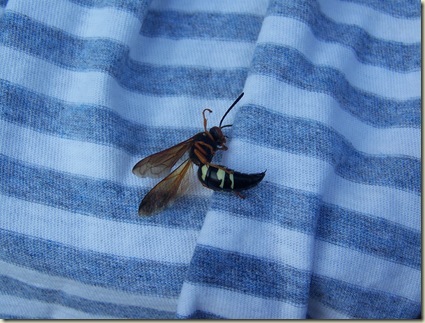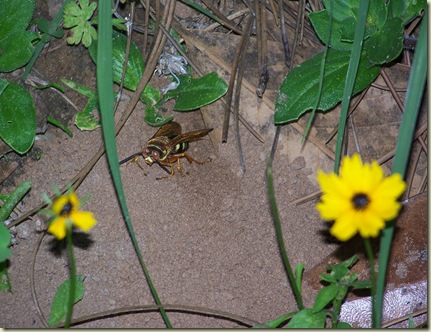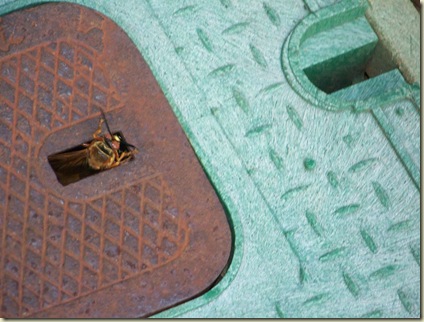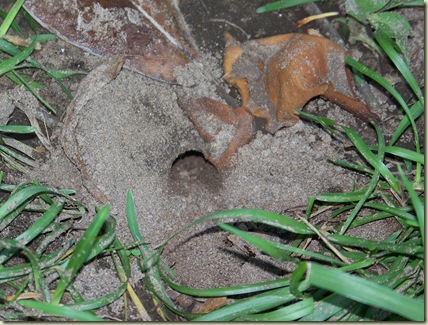Earlier this month, we started noticing a number of large wasps around a garden near our water meter. They were very active coming and going singly from the ground.
A closer inspection, showed that they had made several burrows in the sand.
When B lifted the lid on the water meter, we found another one.
With a little research, we discovered we had cicada killers, a kind of sand wasp. It is among the largest wasps found here, with the females being larger than the males. They are so named because the females hunt and paralyze cicadas with their stingers and bring them into their burrows as food for their young. This is no small task as the cicadas are more than twice the weight of the wasp. We observed one dragging the cicada over rough terrain. The males are the ones making the show of aggressiveness while they have no ability to sting, but do have a barb. Neither males or females are anxious to harm us and will only do so if stepped on or handled roughly.
Here is a dead one.
 We continued to notice them for about two weeks, but have not seen one since. According to our research, the egg laid on the cicada will go through its metamorphosis, feeding on the cicada, and emerge next spring as an adult.
We continued to notice them for about two weeks, but have not seen one since. According to our research, the egg laid on the cicada will go through its metamorphosis, feeding on the cicada, and emerge next spring as an adult.




1 comment:
Cool shots - impressive lookin' critters
Post a Comment